One of the most common questions we receive from clients when we start a new project is: “This X stakeholder is really important to us, what are your thoughts on how best to engage them in the process?”
We love our clients’ commitment to open discussions and transparency. It shows that they are being thoughtful about how to undertake a successful planning process. Since our strategy work frequently has implications for everyone within an organization’s orbit, it makes sense that our clients want to gather input from key stakeholders. However, it is not usually possible to engage every single one of an organization’s supporters about the direction of the organization.
There are many useful acronyms, matrices, and illustrations outlining approaches to prioritizing and engaging stakeholders in decision-making processes, such as Bain’s RAPID tool and adaptations of A.L. Mendelow’s power and interest matrix. These tools are great as theoretical frameworks for prioritizing stakeholders. However, how are they actually applied? Here are some examples of stakeholder engagement questions that we have advised our clients on:
We have a large board of fifty members with varying levels of strategic planning experiences and organizational engagement. It is important to us to get the board’s support on this plan, but we also recognize that achieving full agreement will be impossible. How do we ensure that the board feels like they are part of the process?
Using the power and interest matrix, these board members all fall towards the high-power end of the matrix, but, as the client expressed, they have varying levels of interest in the strategic planning process. We recommended that the client keep the broader board informed of updates and provide opportunities for input, but the real engagement was with the board members interested enough to volunteer their time to join a strategic planning committee. Our planning process has always involved forming a working group of a subset of staff and board members who participate in a series of meetings to discuss key questions, identify and resolve issues, and make strategic decisions. For the broader board, we recommended sending a memo update with an optional input mechanism, such as a survey or open invitation for individual phone calls.
We have a passionate team that is focused on program execution. How do we engage them in strategy work?
We get this question a lot, and our responses have varied, depending on the size of the organization. For a client organization that employs five staff members and two consultants, we conducted phone interview with all seven people to gather their perspectives on the organization. We also worked with the client to identify the “high power/high interest” staff members to engage in the working group. These working group members were those who have the influence to inspire other staff members’ support of the plan and/or whose work was most affected by the strategic plan.
For another client whose staff include seventy-five individuals, we were only able to interview the “high power/high interest” staff members. For all other staff members, we administered an online survey, with the option for respondents to join a voluntary in-person focus group. We have found that this combination of approaches effectively engages staff at a variety of levels, in addition to yielding insights that otherwise would not have been shared.
Our work aims to benefit members in our local community, so it would be great to hear how beneficiaries of our work think we are doing. We work with a lot of people throughout the year, so how might we gather perspectives from all of them?
In terms of the strategic planning process, this group falls on the “lower interest” side of the matrix. They are also “less powerful” in this matrix, based on their limited ability to contribute to the organization’s revenue. Although many stakeholder engagement models suggest that the “less powerful” should only receive relevant updates, we believed it was important to hear what community members want and need. For this client, we recommended an online survey, voluntary in-person focus groups, and a limited number of individual interviews of those who were least likely to complete a survey or volunteer for a focus group. The use of multiple modes of engagement ensured that we gather perspectives from a representative sample of the organization’s constituents.

